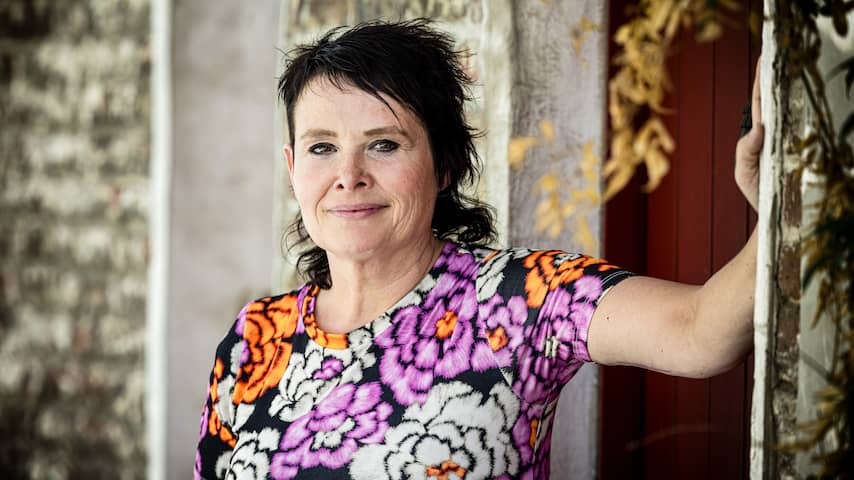
A three-hour live television interview where the guest is interviewed using self-chosen fragments. Zomergasten returns to NPO 2 on Sunday. But where the program used to guarantee broad interest, it no longer achieves the viewing figures of the past.
When photographer Sakir Khader joined Zomergasten last year, 125,000 people watched. The episode was thus the least-watched in the history of the program, which began in 1988.
It was not an isolated incident: other guests also attracted remarkably little audience last season. Trouw even compared the figures to a “stock market crash.” Increasingly, people are turning away from a television evening that once guaranteed national conversation.
Sunday marks the start of the 38th season of the VPRO program, this year presented for the first time by the Flemish writer Griet Op de Beeck. Writer and presenter Özcan Akyol is the first guest. In the following weeks, journalist Simon Kuper, actress Eva Crutzen, professor of Holocaust and Genocide Studies Ugur Ümit Üngör, mayor Femke Halsema, and writer Herman Koch will follow.
Fewer and fewer viewers for the long summer interview
“In some cases, the viewing figures remained below 150,000 last year. That’s dramatic,” says media expert Victor Vlam to NU.nl. The episode with China correspondent Garrie van Pinxteren attracted 145,000 viewers, while the one with author Sana Valiulina drew around 150,000. The low point was Khader, with 122,000 viewers.
A stark contrast to the 1990s, when episodes regularly attracted between 600,000 and 900,000 viewers. The episode with Youp van ‘t Hek was watched by as many as 1.3 million people. The broadcast with Eberhard van der Laan also scored well with almost a million viewers. A recent outlier is the broadcast with Louis van Gaal in 2023. That was watched by 770,000 people.
The guest’s familiarity is still decisive, Vlam argues. “Well-known names simply attract more viewers,” he says. “With Zomergasten, there is always a mix of very famous people and guests who people know less well. Scientists often have a lot to say, but you have to strategically place them between big names. Then people keep watching all summer.”
The VPRO tells NU.nl that guests are chosen “based on a meticulous editorial process.” “They are well-known and lesser-known guests with a special life story or important area of knowledge. The guests of last year met those criteria, and so do the guests of this year,” the broadcaster says.
This season, the program seems to have made more conscious choices in this regard: Akyol, Halsema, Crutzen, and Koch are relatively well-known faces. This increases the chance that viewers will connect with less prominent guests.
This alternation also worked in previous seasons. Guests like Katja Schuurman, Marc-Marie Huijbregts, and Mark Rutte reached people outside the regular VPRO audience. “Even someone like Linda de Mol (who was a guest in 2007, ed.) therefore works,” says Vlam. “Precisely because of the contrast with the guests you normally expect.”
Three hours of talking is no longer unique
Yet, according to Vlam, it is not only about who is a guest. Over the years, Zomergasten has also lost its unique form. “In the past, you had nowhere else a three-hour interview. Now you have, for example, the American Joe Rogan, who conducts weekly long conversations with all kinds of guests, from scientists to celebrities,” says the media expert.
“Not everyone in the Netherlands listens to podcasts, but the VPRO audience does. These are often highly educated people from the Randstad: precisely the target group that has now found other alternatives.”
In addition to the content-related doubts, there are also financial considerations. Zomergasten is an expensive program: broadcast live, with a lot of staff and rights to fragments that need to be purchased. “The impact versus the number of viewers is actually too small to justify it anymore,” Vlam believes.
Content and impact are the tasks of the NPO
Yet Vlam emphasizes that viewing figures do not tell the whole story. “The task of the NPO is also to make programs with content and impact. These are not always intended for an audience of millions,” he says.
The NPO responded in De Telegraaf halfway through last season to the disappointing viewing figures. “The public broadcaster is mainly about public values such as independence, reliability, diversity, and impact.”
Whether the public is still waiting for that remains to be seen in the coming weeks. “A program like this should actually be able to attract at least 250,000 viewers,” says Vlam. “But I wonder if that will succeed this year.”